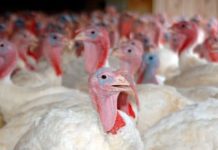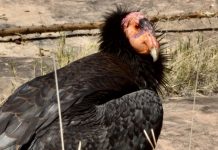
Oct. 8 (UPI) — Scientists have identified the genetic mutations that allowed an avian flu strain to adapt to mammalian transmission, triggering an outbreak among European seals.
In 2014, an avian flu strain spread rapidly among harbor and gray seals in northern Europe, killing roughly a tenth of the population.
For the new study, published Wednesday in the journal Cell Host and Microbe, researchers exposed ferrets to different strains of H10N7, the virus subtype responsible for the 2014 seal flu outbreak.
Scientists found most avian flu strains failed to infect the ferrets, but that seal-adapted strains were successfully transmitted via the air from ferret to ferret.
The study suggests avian flu can regularly and repeatedly acquire mutations that make them more transmissible among mammals.
“Usually, these occasional introductions of avian influenza viruses in seals, like in humans, are ‘dead ends’ because the virus is not transmissible from one individual to another,” first study author Sander Herfst said in a news release.
“However, sometimes these viruses adapt to the new host and acquire the ability to be transmitted between individuals,” said Herft, an assistant professor of molecular virology and virus evolution at Erasmus University Medical Center in the Netherlands.
Researchers suspect the 2014 outbreak, which killed some 2,500 seals, began in western Sweden when one or more seals came into contact with infected birds or virus-laden bird droppings.
“Transmission from seal to seal is likely to have occurred via aerosols or respiratory droplets, most probably whilst the seals are resting on land,” said Herfst. “However, direct contact transmission between seals can also not be excluded because seals are highly social and interact with each other regularly.”
Lab tests showed the same strains found spreading among seals were able to spread among ferrets.
“The seal-adapted virus was efficiently transmitted through the air via aerosols or droplets between ferrets, whereas the avian virus was not,” Herfst said. “These findings suggest that the mutations the avian virus underwent once it took hold within the seal population have allowed it to become transmissible via the air between mammals.”
Comparisons of avian flu strain genomes and mammal-adapted strains revealed changes to the genes responsible for the regulation of hemagglutinin, a protein on the surface of influenza viruses.
Researchers found the mutations caused the virus to prefer to attach to mammal virus receptors in the respiratory tract, rather than to avian receptors.
Because the strains isolated for the study were collected late in the 2014 outbreak, scientists suggest the mutations may have occurred after the virus was already spreading among seals.
“The mutations that we identified are similar to the ones acquired in 1957 in the first year of the H2N2 pandemic in humans,” Herfst said. “In addition, these same mutations were required to render highly pathogenic avian influenza viruses of the H5N1 subtype transmissible via the air between ferrets — a model organism for mammal influenza research.”
The findings suggests influenza strains may regularly adopt mutations that enable spread among mammals, the researchers said.
By understanding how viruses like COVID-19, as well as the H5N1 and H7N9 influenza strains, move from species to species, researchers and health officials can develop more informed strategies for preventing future zoonotic disease outbreaks.
“It is important to monitor and predict which of the various zoonotic viruses have the potential to emerge in humans and start outbreaks or even pandemics,” said Herfst. “Without this knowledge we can only apply a reactive rather than a pre-emptive approach to limit the impact of emerging virus infections, as is currently done for the COVID pandemic.”






